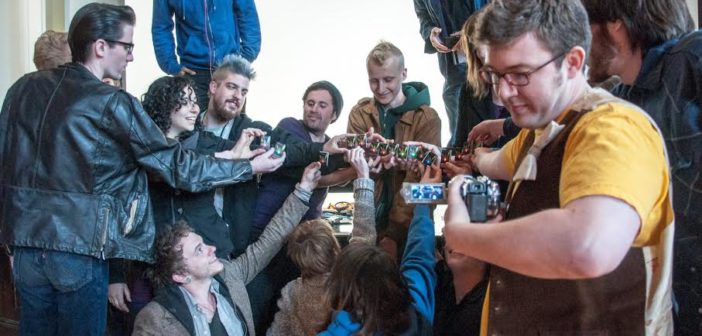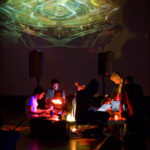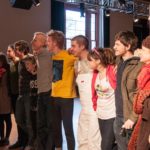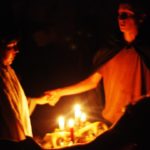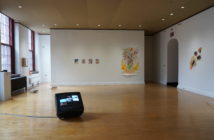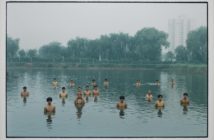Micah Danemayer, aka: hippie johnny / jungle jim / ic pcp / wife rice / fake steak / real veal / mono tony / visual aids
December 31, 2016
I was in Miami the night I heard about the fire in Oakland earlier this month. I had just finished a performance with my wife and collaborator and was in the process of enjoying another performance, an electronic music performance with strong kawaii aesthetics. It’s something I think Micah would really have enjoyed.
By that time, Micah had been listed as MISSING as a result of the Ghost Ship fire, and I assumed that meant that he had lost all of his possessions, run out into the night and was frantically looking for a way to get help on the streets of Oakland.
I assumed that he had escaped yet another fire, like the one that he could very well have been at, which consumed my home back in Boston circa 2009-10 while we were both studying art there. Living and performing in these precarious and eclectic spaces are ways of life for those of us in the underground, d.i.y. art circuit across the country. Brian Chippendale of legendary noise duo Lightning Bolt wrote very eloquently about this topic recently.
The venue I was standing in, watching these performance sets, could very well have fit the description above, along with countless other venues I had performed in recently. I got the message that Micah was missing and my emotions began to gradually sink towards my feet. My mind was clinging to the official label, thinking positively about his eventual resurfacing, but my body betrayed a darker feeling, and I just sobbed out loud, “I hope my friend isn’t dead.”

I was afraid for the Micah I had known, the Micah who was so enthusiastically probing life and figuring things out, the Micah who had yet to find his voice amongst the din of creative energy in the infosphere. But I didn’t realize to what extent that Micah had already gone, been remixed, upgraded.
Micah, while at school in Boston, was clumsily making his way through art history and trying to square that with the kind of work he was feeling compelled to make. He was drawn to re-assemblage, the cut-up technique popularized in literature by William Burroughs. Micah would go on to apply this method to many aspects of his life including poetry, video sampling, and I would venture to say cooking as well. [Making did a lot of dumpster diving and was really good at making sanwhiches]
Micah was undertaking an exploration of form at a time and in a department where most of us were exploring concepts. This often put him at odds with the aesthetic ‘movements’ of the day at college. He once remarked that the key difference between himself and a highly regarded fellow student artist was “different levels of affluence”. I remember many of us cackling at Micah’s use of such an absurd-sounding word and the audacity of his comparison, but now I think he may have been more correct than we all gave him credit for.
To varying degrees, many of us were playing art historical catch-up of one form or another, Micah was just the most upfront about it. Once, he appeared at a department-wide opening with a piece of his own that was simply a plate of the artist’s shit. All of us “art fags”, as Micah playfully called the Hermione Graingers of our art school, saw it as a comically unconscious re-creation of Piero Manzoni’s mid-century critique of the art market. But while we were connecting those dots, we missed Micah’s point entirely. He knew he was light years away from the art market, and thus from Manzoni’s original intentions. Micah’s interest stemmed instead from something much more grounded in existential uncertainty and an uncertainty regarding creative expression in general. I wonder if he was reading Georges Bataille at the time.
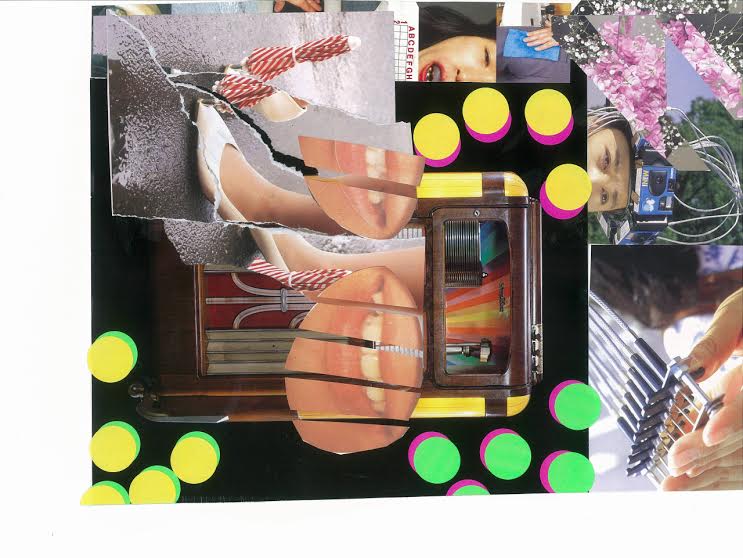
Micah Danemayer, Collage. Courtesy of Ian Deleón.
While in school we collaborated on many an audio-visual mashup, including a 30-minute jam session he called “homelesssexuals”, in which he convinced me to sing and ‘play’ the keyboard. I knew I was shit at playing any instrument, but Micah would never agree to absolute statements like that. He saw creative expression as a spectrum of possibilities that was neither horrid nor too excellent on any one end. We were all human after all, and there was room for everyone, at any level of instrumental mastery.
He was infinitely democratic that way, made you feel great about trying new things and failing. He made you realize that sometimes it was more important to just try a thing and have fun with it rather than compare yourself to the endless masters that came before. At the time I thought that I was teaching him about a lot of things, especially about how to be (or appear to be) a contemporary artist--something I was only starting to figure out for myself--but it was actually Micah who was teaching me a great many things, essentially lessons on how to free myself from myself. I probably owe a great deal of my fearlessness as a performance artist to the work he did trying to free me from my own inhibitions and hangups about being an ‘artist’. [Micah was definitely an “air quotes” kinda guy, hence all of them in this writing]
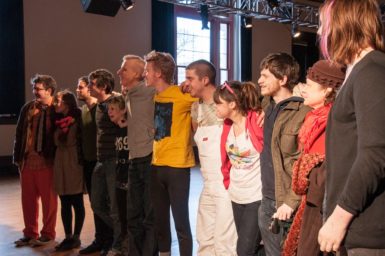
Courtesy of Ian Deleón.
As that week in early December dragged on and I returned to NYC after performing in Miami during (not at) Art Basel, I spent every night alone after work thinking of everything we had done together; the seances that began as fun summer misadventures to the cemetery and were later channeled into an epic performance at MassArt’s squash courts, which sought to induce a hallucinatory sensation in the audience using spices, chanting, lighting and way too much smoke.
I thought of our endless back and forth conversations via social media in which we relentlessly shared weird documentaries, freaky music and intense art work with each other. We were always refining a shared visual aesthetic that probably had its most pristine manifestation in the film Blade Runner. Micah was obsessed, as was I, with the Voight Kampff test (essentially the Turing test), which determined a machine from a human. Micah was ahead of me by years in watching the original Westworld film. I never got to talk with him about the new HBO show, I had only started watching it when he died.

Performance with Ian Deleón and Micah Danemayer. Courtesy of Ian Deleón.
“Lost, like tears in the rain.”
At the end of that week, I remembered and honored Micah the only way I knew how, the way I knew he would appreciate the most, with a live performance that blended all of our favorite irreverent topics, from “Paris is Burning” to “Silence of the Lambs” and Ariel Pink. I stood shirtless on a stage with a combination cock/microphone/broom, while the audience held their fingers up to the Christ breast/wound on my torso and I sauntered through some of our favorite songs, missing lyrics as I went, and not giving a fuck. I said goodbye to the Micah I knew, my Micah, and simultaneously embraced the dozens of other Micahs that I had only recently learned existed. He touched so many lives and meant so many things to others than me. We may have all had our own unique Micahs, he was complex that way, more human than the best of us.
“Goodbye horses, I’m flying over you.” [Q Lazzarus]
“A soul for the stars. A soul for the stars.” [Suicide]
“I’m afraid, you’re afraid. And we die and we live and we’re born again.” [Ariel Pink]
Despite what was going on at a global level, for Micah, as for me, 2016 was the best year of our lives. I met and married my wife and Micah met and had just moved in with the love of his life. He was psyched, and it would only be a matter of time before the four of us met and tore the West Coast a new one.
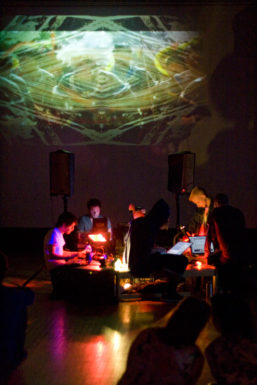
Performance with Ian Deleón and Micah Danemayer. Courtesy of Ian Deleón.
But we never got to do that. Instead, David Bowie died, Prince died, George Michael died, Carrie Fisher died. Micah and his girlfriend died together under a collapsed performance venue and all of a sudden my friend’s name was indirectly on the tip of everyone’s tongue across the nation. Micah was at the White House, Micah was in Rolling Stone.
But way before all of that, Micah had figured it out. He went to California on two wings and a dream and he lived magnificently. He formed his own ‘mutant’ community and breathed life into new artists, new modes of expression. I’ll always regret never having seen any of this in person for myself. But if you look closely enough, you can see it, his roots, leading all the way back to that glittering plate lying so casually in the exhibition hall...daring all visitor attempts to gaze and judge without consequences.
Micah thought unlike many of us, and I grew to love him for that. He had a distinctive Rubik’s cube tattoo on his body, which probably tells you as much about him as my wound tattoo does about me. I was relieved when I heard that the fire had not taken that superficial mystery away from him.
Micah, I know you’ll be there, standing next to us, jamming, bouncing your head at every noise show, every weird performance, every street action. I’ll miss you bud. I hope you’re somewhere trying to start a band with Alan Rickman, Gene Wilder, and Fidel Castro. Xoxoxo, ian
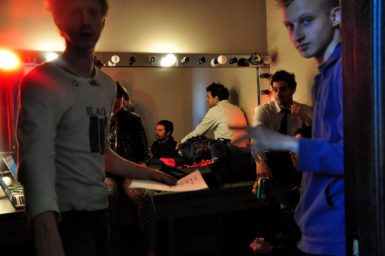
Courtesy of Ian Deleón.
A few of Micah’s projects, in his own words:
Jungle Jim is a solo sound project consisting of Micah Danemayer.
Jungle Jim’s ear is Tuned to another time, conjuring lush, tropical imagery. Armed with tape cassette, loop station, and a sampler, Jungle Jim caresses the audience with sonic meditations that stir into introspective percussion. His work attempts to bind a wide variety of influences (music or otherwise) into a single train of sonic thought.
Visual Aids is an ongoing research project that is meant to co-exist alongside live music accompaniment. Working with a variety of analogue technology and source material (VHS or internet based), Aids tries to find a continuity or language between sight and sound.
With an interest in thrift store quality bootlegs and weird themes, Aids finds humor in the obscure, painting the screen with new out of context sequences that allow the viewer to construct their own narratives.
I.C.P.C.P is a recent discovery/diversion into areas lesser known… further into less well-lit areas… dusty.. degraded… of a future ever present.
--I couldn’t help myself, Micah, I fixed some of your spelling errors 😉
And a link to one of Micah’s audio-visual mashup pieces, "KOOL AS ICE," which I had put in a show years ago. I discovered the DVD a few days ago and realized it wasn’t online and possibly has not been seen by anyone since.

Still from KOOL AS ICE. Courtesy of Ian Deleón.
- Still from KOOL AS ICE. Courtesy of Ian Deleón.
- Performance with Ian Deleón and Micah Danemayer. Courtesy of Ian Deleón.
- Courtesy of Ian Deleon.
- Performance with Ian Deleon and Micah Danemayer. Courtesy of Ian Deleon.
- Courtesy of Ian Deleón.
- Micah Danemayer, Collage.

